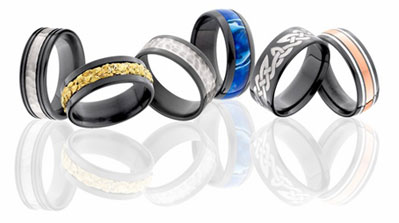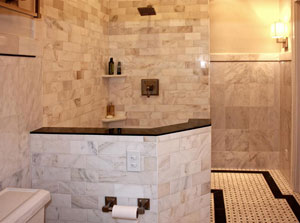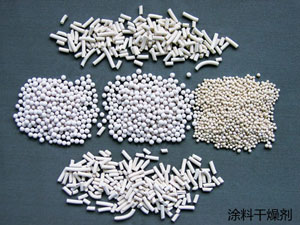Where Zirconium Is Used
Zirconium in Industrial Quality
Industrial‐grade zirconium is primarily employed for the manufacture of equipment that resists chemical corrosion. It is used in the military and electronics sectors, for pipeline valve materials, for specialised high‐strength and high‐temperature‐resistant alloy materials, in electrical vacuum applications and as a getter in lighting engineering.

Fireworks‐grade Zirconium
Zirconium sponge is utilised during flame combustion. It can be applied as an alloying additive and metallurgical deoxidiser in the chemical industry. It is also used in civilian flash pyrotechnics and related applications.
Global Zirconium Consumption Regions
Currently, China and Europe are the principal consumption markets for zirconium. China’s demand accounts for up to 52% of total consumption. Given that China’s nuclear energy sector is undergoing rapid development, the demand for nuclear‐grade zirconium has increased. China is also the largest producer and exporter of ceramic products worldwide, with the zircon‐silicate ceramic industry serving as a key raw material source. Consequently, recent developments in the Chinese ceramics industry have contributed to a significant rise in zirconium demand.
Zirconium Industry Chain
Zirconium exists in a wide variety of products and forms. Its initial mineral state is zircon sand. After treatment with caustic soda and washing, primary products such as zircon‐silicate and zirconium oxychloride can be produced. Subsequent calcination, chlorination and reduction enable the production of zirconium dioxide and industrial‐grade zirconium sponge. Once purification and separation technology reaches a designated level, nuclear‐grade zirconium sponge can be produced.
Zirconium is employed in many fields. It is primarily used in the form of zircon‐silicate and zirconium oxide in ceramics, refractory materials and other applications. Only 3 % to 4 % of zirconium ore is processed into zirconium (or zirconium sponge) before conversion into various zirconium materials. Given that the metal exhibits a low thermal neutron absorption cross‐section, it possesses significant nuclear properties. Nuclear‐grade zirconium is used for the structural materials of nuclear‐powered aircraft carriers, nuclear submarines and civil power reactors, as well as for uranium fuel cladding. Nuclear‐quality zirconium is regarded as an important strategic metal and is closely linked to the development of the nuclear industry.
As an active metal, zirconium forms an oxide film at room temperature, thereby providing corrosion resistance for both the metal and its alloys. Furthermore, zirconium has satisfactory mechanical and thermal properties and a marked cost advantage, which renders it suitable as a corrosion‐resistant structural material in the petrochemical industry. It is used in equipment that withstands chemical acids and alkalis in the military and electronics sectors, and is hence identified as industrial‐grade zirconium. Given the processing challenges, the current technological level and the scientific content, zirconium and its alloy products occupy a leading position in the industry chain.
Zirconium Products and Their Applications
Zircon‐silicate
Zircon‐silicate is a traditional zirconium product. It is manufactured using zircon sand as a raw material. After grinding, calcination and pulverisation, it is produced as a ceramic glaze opacifier that meets established technical specifications. It is predominantly used in the production of ceramics and porcelain, in building ceramic glaze production and is applied in refractory materials, precision casting, emulgated glass and other sectors.

Zirconium Carbonate
Zirconium carbonate is primarily employed as a cosmetic additive, waterproofing agent, flame retardant, sun‐protection agent and as an additive for fibre and paper surfaces. It is also utilised in the manufacture of zirconium–ceramic catalyst composite materials. It is an important raw material for the textile, paper, paint and cosmetics industries, with demand increasing in recent years.
Zirconium Oxychloride
Zirconium oxychloride is used in the preparation of other zirconium products such as zirconium dioxide, zirconium carbonate, zirconium sulphate and zirconium oxide, and for the separation of zirconium and hafnium in metal materials. It is also applied in additives for textiles, leather and rubber, as a metal surface treatment agent, in coating dryers, in refractory materials, ceramics, catalysts, and in fire‐resistant products.

Molten Zirconium Dioxide
Molten zirconium dioxide is chiefly employed in the manufacture of glazes and refractory materials. Its use is limited by the high content of impurities present in the material.
Zirconium Sulphate
This compound is an important raw material for the production of leather tanning agents, wool processing aids and oxidising agents for paint surfaces. It can be used as a catalyst carrier, in amino acid and protein applications, as a precipitating agent and deodorant, and as an intermediate for zirconium chemicals as well as for metal zirconium and hafnium.
Zirconium Dioxide
Zirconium dioxide is a white solid that is non‐toxic and flavourless. It exhibits sufficient stability in alkaline and many acidic solutions. It is suitable for precision ceramics, electronic ceramics, optical lenses, glass additives, refractory zirconium dioxide bricks, ceramic pigments, glazes, artificial stone and is used in the grinding and polishing industries.

Composite Zirconium Dioxide
Composite zirconium dioxide, also known as semi‐stable zirconium dioxide, is a white powder that is non‐toxic and flavourless. It possesses stable chemical properties and a controllable specific surface area. It is used in the production of various specialised ceramics, refractory materials, new energy materials, optical communication devices and other products.
Structural Ceramics from Zirconium Dioxide
Using composite zirconium dioxide as a raw material, products are manufactured in two forms: ground zirconium dioxide and structured zirconium dioxide. The structured form is mainly applied in the production of ceramic valves, fibre‐optic connectors, ceramic knives, watch components, ceramic scissors and textile porcelain.
Zirconium Dioxide in Nuclear Quality
Nuclear‐grade zirconium dioxide is an important strategic material. It is used primarily in nuclear‐powered aircraft carriers, nuclear submarines and civil power reactors, as well as in the cladding of uranium fuel elements.
Zirconium in Industrial Quality
Industrial‐quality zirconium is chiefly employed in the production of equipment that resists chemical corrosion. It is used in the military and electronics sectors, in materials for pipeline valves, in specialised high‐strength and high‐temperature‐resistant alloys, in electrical vacuum applications and in getters for the lighting industry.
Fireworks‐grade Zirconium
Zirconium sponge is also utilised during flame combustion. It can be applied as an additive in alloys and as a metallurgical deoxidiser in the chemical industry, and is used in civilian flash pyrotechnics, among other applications.
Global Zirconium Consumption Regions
Currently, China and Europe constitute the main consumption markets for zirconium.

 Bars
Bars
 Beads & Spheres
Beads & Spheres
 Bolts & Nuts
Bolts & Nuts
 Crucibles
Crucibles
 Discs
Discs
 Fibers & Fabrics
Fibers & Fabrics
 Films
Films
 Flake
Flake
 Foams
Foams
 Foil
Foil
 Granules
Granules
 Honeycombs
Honeycombs
 Ink
Ink
 Laminate
Laminate
 Lumps
Lumps
 Meshes
Meshes
 Metallised Film
Metallised Film
 Plate
Plate
 Powders
Powders
 Rod
Rod
 Sheets
Sheets
 Single Crystals
Single Crystals
 Sputtering Target
Sputtering Target
 Tubes
Tubes
 Washer
Washer
 Wires
Wires
 Converters & Calculators
Converters & Calculators
 Write for Us
Write for Us
 Chin Trento
Chin Trento



